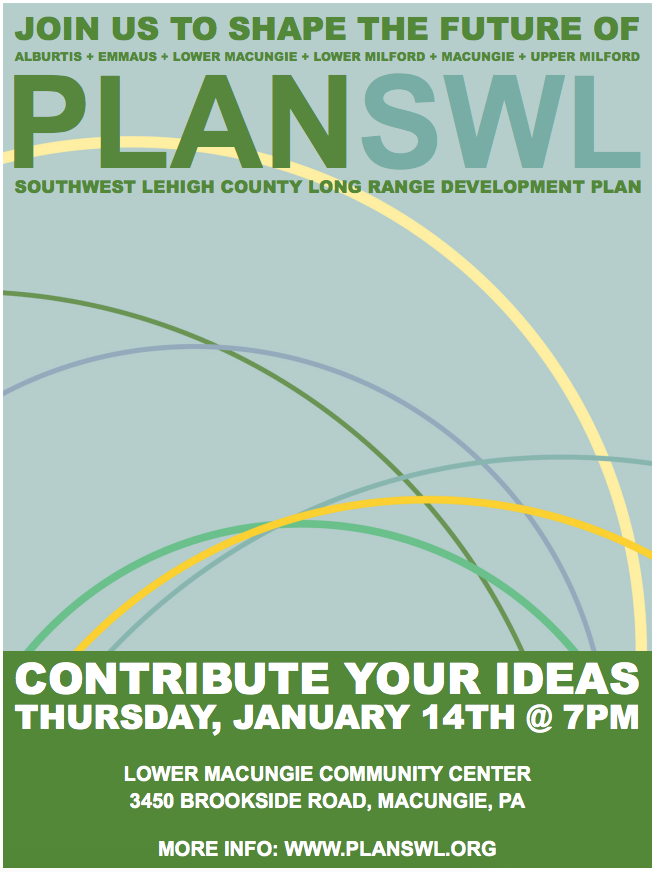How has Southwest Lehigh County (SWELCO) changed in the last 10 years? What will Southwest Lehigh County look like 25 years from now? Where should new development occur?What kind of development should it be? What will happen to existing neighborhoods and local character?
SWELCO includes Emmaus, Lower Macungie, Macungie, Alburtis & Upper and Lower Milford. Together we are beginning a process to determine the answers to these questions and more with the development of a new comprehensive Plan.
I attended 3 small groups yesterday and caught the end of another today. Here are (just a few of many!) key takeaways from my perspective:
1. Always interesting to hear from the farmers who were well represented. Its important to not only preserve the soil (an irreplaceable natural resource) but also ensure we give farmers the tools they need to keep farming market viable. Critical for a place like Lower Mac where large scale farming is probably no longer in the cards. However, smaller scale and different types definitely still are. This means CSA’s, vegetable production, agri-entertainment, etc. There is a future for farming in Lower Mac. It just won’t look exactly the same as it has in the past. It’s a change for sure. But in my opinion an exciting one. Huge topic over the next year.
2. Density. There are still some who snap-back against density. For the most part however folks acknowledge that targeted density is OK in appropriate (key appropriate!) locations. In Lower Macungie Twp. that is Hamilton Blvd corridor. A place where taxpayers already made significant key and costly investments in infrastructure. Density is how we cash in on those investments. Density in other poor locations like for example west of Rt. 100 will cost taxpayers over the long run.
3. We (the SWELCO region) have to better consider cost of municipal services. Meaning, when a zoning area or land development is proposed we must #dothemath to truly quantify if a particular plan or change makes financial sense for a resilient tax base. I worry that the township has lost some balance with our % of warehouses. We are more than shouldering a fair share. We now need to quantify the liabilities and work towards counteracting by attracting more productive, high quality and property located development to “balance the books” so to speak. It’s not enough to chase economic development. We have to instead foster productive economic development. We need an economic gardening mindset on the Boulevard. An incremental approach.
4. Transportation. One of the most popular sessions both days. For obvious reasons. Our problems are well defined. Sprawl has led to what I call a system of “traffic sewers” or a hierarchy of roads that funnel all traffic our volume to the highest classification roads as opposed to a more efficient grid system. Now, this is in some ways the nature of the beast in suburbia. The problem is (or opportunity rather) is not to double down on your typical “solutions” mostly dealing with band-aid fixes and endless capacity increases. (which actually induce more traffic) This is both inneffective and also vey expensive.
Lastly, Freight of course is now our new reality. And focus of much intense discussion. Not something easy to encapsulate. Of all items talked about the toughest to solve.
Are you interested in these issues? Do you want to have a voice in the conservation? Please consider attending and contributing your ideas at the January 14th public meeting for plan south west Lehigh. !
!
